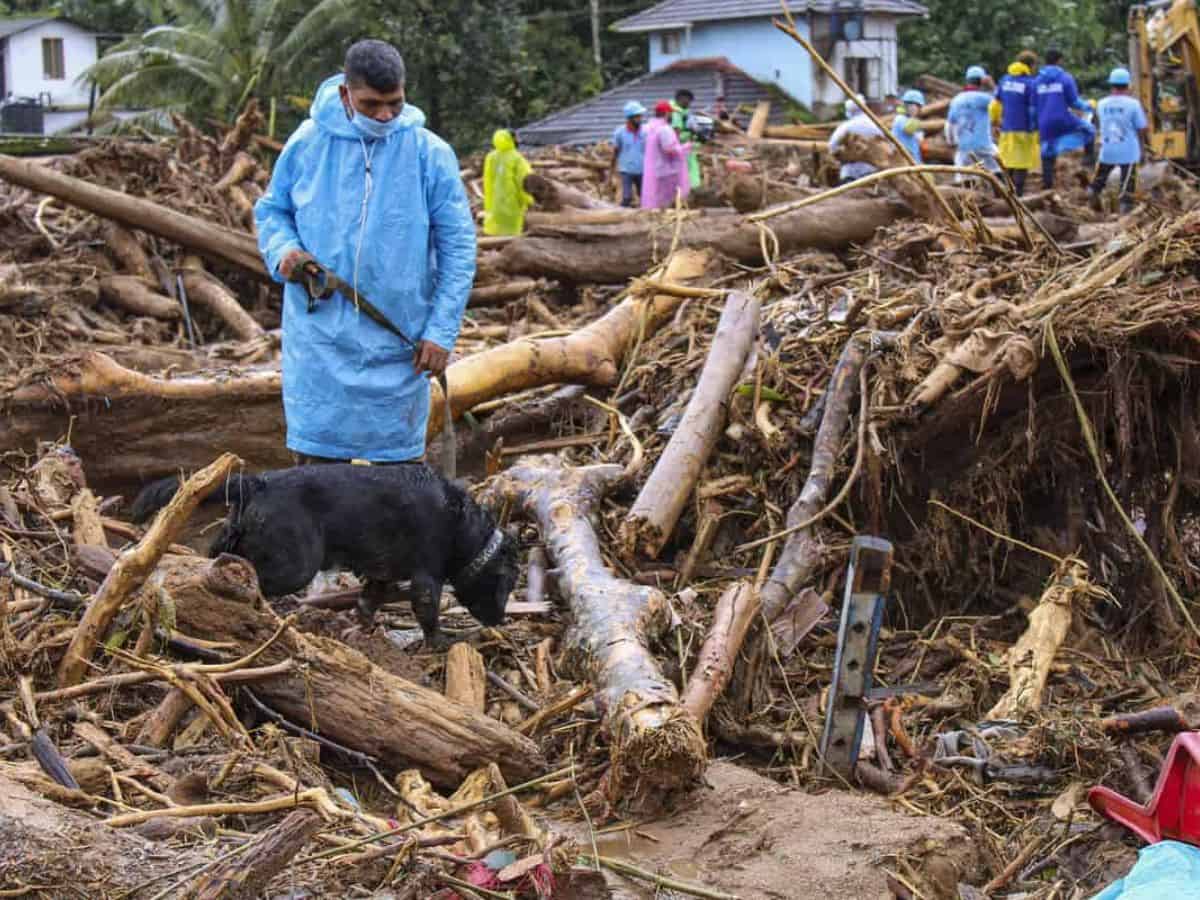
India’s vulnerability to natural disasters has long been recognised as a consequence of its unique geo-climatic conditions. Floods, droughts, cyclones, earthquakes, and landslides are not new phenomena for the country. However, the recent series of natural disasters has exposed the need for better climate change response and disaster management systems in India. These events underscore the urgent need for a re-evaluation and reinforcement of the country’s preparedness and response mechanisms.
Take, for instance, the Wayanad landslides in Kerala that primarily affected six villages. This tragic event claimed more than 400 lives and left countless more displaced and over 1,555 houses and 100 other buildings, including schools, a dispensary, the Panchayat Bhawan, and the electricity board office, were damaged. In addition, it ravaged 310 hectares of agricultural land. These landslides were caused by intensified rainfall, a direct consequence of climate change, rooted in environmental degradation and unsustainable development practices.
Climate experts assert that deforestation and land clearing for cash crops, coupled with disruptive agricultural practices like rubber replantation, have severely destabilised the region’s soil and hydrological balance. Additionally, rampant quarrying and hasty construction projects intensified the situation by causing soil erosion and obstructing natural drainage systems. The absence of proper land-use policies and inadequate regulation of these activities have compounded the risks.
Flooding of roads in Delhi during monsoon is an annual affair. However, a tragedy that occurred during one such flooding recently brings out the urgent need for disaster preparedness. This incident, which trapped several people in a basement where flood waters entered, led to the death of three civil services aspirants. It laid bare the capital city’s lack of preparedness and inadequate drainage infrastructure. The disaster also raised critical questions about the accountability of civic authorities and underscored the need for quality urban planning.
The situation in Assam further illustrates the widespread impact of natural disasters. By June 2nd, 13 districts in the state were flooded, with three lives lost, 5,35,000 people affected, and 8,144 hectares of crop area submerged, according to the Assam State Disaster Management Authority (ASDMA). The floods caused immediate devastation and threatened long-term food security and livelihoods, particularly among the most vulnerable populations. Similarly, in Himachal Pradesh, relentless rains led to the deaths of 110 people and caused an estimated Rs 1,004 crores in damages between June 27 and August 12. These figures are a stark reminder of the scale of destruction that can occur when nature’s fury meets unprepared and vulnerable communities.
The state of Rajasthan, too, has not been spared. Recent heavy rainfall has resulted in over 20 deaths, widespread waterlogging, and the closure of schools across several districts. The situation has necessitated large-scale rescue operations by the National Disaster Response Force (NDRF) and State Disaster Response Force (SDRF).
These events collectively point to a clear and urgent need for a comprehensive disaster management framework in India. The recurring themes of inadequate preparedness, substandard infrastructure, and environmental degradation are too significant to ignore. Moreover, the increasing frequency and intensity of extreme weather events, intensified by climate change, demands an advanced approach to disaster management.
While recent disasters have highlighted ongoing challenges, it is important to recognise that India has made significant strides in disaster management over the years. The Disaster Management Act of 2005 marked a crucial shift from a reactive, relief-focused approach to one that prioritises prevention, mitigation, and preparedness. This legislation established a comprehensive framework, introducing a three-tier system that operates at the national, state, and district levels, with the National Disaster Management Authority (NDMA) at its core. Along with State and District Disaster Management Authorities (SDMAs and DDMAs), this structure forms the backbone of India’s disaster management efforts.
The creation of the NDRF further strengthened India’s disaster management capabilities, with teams trained to international standards. In 2014, a 10-point agenda was introduced to emphasise proactive measures, focusing on minimising losses through better mitigation and preparedness.
Building on this momentum, the launch of the Coalition for Disaster Resilient Infrastructure (CDRI) in 2019 represented another significant step forward. The CDRI focuses on promoting infrastructure resilience to climate and disaster risks, demonstrating a forward-thinking approach to safeguarding development gains and supporting sustainable progress.
However, while these measures have laid a solid foundation, there is a consensus among experts that much more remains to be done. Public awareness and capacity building, particularly at the community level, are critical. Local communities are often the first responders when disaster strikes, so it is essential to enhance their resources, skills, and access to vital information.
Integrating advanced technology is another area that demands urgent attention. Real-time monitoring, predictive analytics, and improved communication systems have the potential to drastically improve response times and resource allocation, thereby reducing the impact of disasters. Additionally, increased investment in disaster-resilient infrastructure is crucial to protect against future adversities.
Preventive measures should also be included to mitigate the impacts of climate change. Sustainable land-use planning, stricter enforcement of environmental regulations, and promoting climate-resilient agricultural practices are some approaches. These efforts can reduce the vulnerability of communities to climate-induced disasters.
The recent disasters in Wayanad, Delhi, Assam, Himachal Pradesh, and Rajasthan should be a wake-up call. India must embrace a more holistic and forward-thinking approach to disaster management, turning these challenges into opportunities for sustainable growth and resilience in the face of climate change.
Moumita Barman is a Research Associate at the Centre for Development Policy and Practice (CDPP). The CDPP is a policy think tank based in Hyderabad, Telangana.



